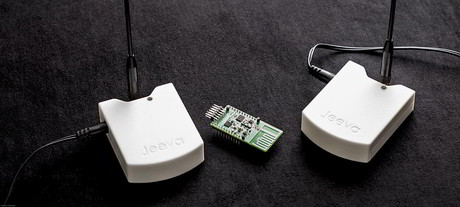Long-range backscatter breakthrough

The long-range communication barrier has been shattered for near-zero-power devices.
University of Washington (UW) researchers have demonstrated that devices that run on almost zero power can transmit data across distances of up to 2.8 kilometres — breaking a long-held barrier and potentially enabling a vast array of interconnected devices.
Flexible electronics hold great promise for collecting data. But today’s flexible electronics and other sensors that can’t employ bulky batteries and need to operate with very low power typically can’t communicate with other devices more than a few feet or metres away. This limits their practical use in applications ranging from medical monitoring and home sensing to smart cities and precision agriculture.
By contrast, the UW’s long-range backscatter system, which uses reflected radio signals to transmit data at extremely low power and low cost, achieved reliable coverage throughout a 450-square-metre house, an office area covering 41 rooms and a 0.4-hectare vegetable farm.
“Until now, devices that can communicate over long distances have consumed a lot of power. The trade-off in a low-power device that consumes microwatts of power is that its communication range is short,” said Shyam Gollakota, lead faculty and associate professor in the Paul G. Allen School of Computer Science & Engineering. “Now we’ve shown that we can offer both, which will be pretty game changing for a lot of different industries and applications.”
The team’s latest long-range backscatter system provides reliable long-range communication with sensors that consume 1000 times less power than existing technologies capable of transmitting data over similar distances. It’s an important and necessary breakthrough towards embedding connectivity into billions of everyday objects.

The long-range backscatter system will be commercialised by Jeeva Wireless, a spin-out company founded by the UW team of computer scientists and electrical engineers, which expects to begin selling it within six months.
The sensors are so cheap — with an expected bulk cost of 10 to 20 cents each — that farmers looking to measure soil temperature or moisture could affordably blanket an entire field to determine how to efficiently plant seeds or water.
Other potential applications range from sensor arrays that could monitor pollution, noise or traffic in smart cities or medical devices that could wirelessly transmit information about a heart patient’s condition around the clock.
“People have been talking about embedding connectivity into everyday objects such as laundry detergent, paper towels and coffee cups for years, but the problem is the cost and power consumption to achieve this,” said Vamsi Talla, CTO of Jeeva Wireless, who was an Allen School postdoctoral researcher and received a doctorate in electrical engineering from the UW.
“This is the first wireless system that can inject connectivity into any device with very minimal cost.”
The research team, for instance, built a contact lens prototype and a flexible epidermal patch that attaches to human skin, which successfully used long-range backscatter to transmit information across a 300-square-metre atrium. That’s orders of magnitude larger than the one-metre range achieved by prior smart contact lens designs.
The system has three components: a source that emits a radio signal, sensors that encode information in reflections of that signal and an inexpensive off-the-shelf receiver that decodes the information. When the sensor is placed between the source and receiver, the system can transmit data at distances up to 475 metres. When the sensor is placed next to the signal source, the receiver can decode information from as far as 2.8 kilometres away.

The advantage to using backscattered radio signals to convey information is a sensor can run on extremely low power that can be provided by thin cheap flexible printed batteries or can be harvested from ambient sources — eliminating the need for bulky batteries. The disadvantage is that it’s difficult for a receiver to distinguish these extremely weak reflections from the original signal and other noise.
“It’s like trying to listen to a conversation happening on the other side of a thick wall — you might hear some faint voices but you can’t quite make out the words,” said Mehrdad Hessar, an Allen School doctoral student. “With our new technology we can essentially decode those words even when the conversation itself is hard to hear.”
To overcome the problem, the UW team introduced a new type of modulation — called chirp spread spectrum — into its backscatter design. Spreading the reflected signals across multiple frequencies enabled the team to achieve much greater sensitivities and decode backscattered signals across greater distances even when it’s below the noise.
“We basically started with a clean slate and said if what we really need to enable smart applications is long-range communication, how could we design the system from the ground up to achieve that goal?” said Bryce Kellogg, a co-founder at Jeeva Wireless who was a UW electrical engineering student.
Other researchers involved in the work include Joshua Smith, professor in the Allen School and the UW Department of Electrical Engineering, and UW electrical engineering doctoral student Ali Najafi. The research was funded by the US National Science Foundation.
The new wildfire reality: mapping a response
Firefighter-turned-researcher Chris Dunn is helping pioneer data-driven solutions to tackle...
ARCIA update: LMR is not dead yet
Be it mining, rail, public safety, transport or utilities, everyone is embracing new technology...
Towards 1 Tbps throughput using sub-terahertz bands
In order to enable the near-instantaneous communication promised by 6G, ultrahigh data speeds...






